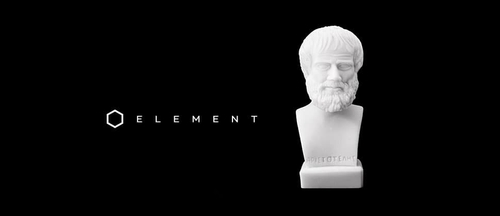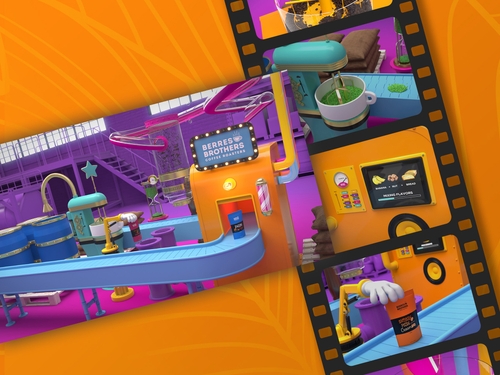That Your Customers Find Valuable
Infographics are great tools for top- or middle-of-the-funnel content. In other words, information that helps to compel or educate decision makers. They are an efficient way of sharing a mix of content, design, and data in an easily consumable piece. They are simple to scan, and with the brain processing images 60,000 times faster than it does text, it makes sense why they can be wildly effective.
We like to think of them as “tools to help buyers buy” (not sellers sell). Your infographics could be shared throughout the internet, posted to social channels, and exist as evergreen content on your company’s website. With 57 percent of purchase decisions occurring before a customer even contacts your company, it’s the perfect piece for your customers to discover.
Infographics are most successful when they:
- Are built to answer a question your audience has
- Simplify a complex concept
- Show comparisons
- Display an abundance of data
Not all infographics are created equally. Defining a robust strategy and truly understanding your target audience are integral, yet often neglected, cornerstones to creating a killer infographic.
Content Strategy
1. Who is your audience?
You may have completed this step if you’re already embarking on a content marketing journey, but if not, now is the time. It’s imperative to understand your audience in order to produce content that they will find valuable.
- What is their job function?
- What do they care about?
- What keeps them up at night?
- What problem can you help them solve?
- What are their motivations?
- Where do they currently search for information?
2. What are your objectives for creating an infographic?
Content marketing results do not happen overnight. It’s important to not get frustrated and to continually remind yourself that the best content marketing nurtures buyers through their purchasing cycle.
Really, the buyer’s path to purchase journey is like serving a four-course meal: you serve the appetizer, then the salad, then the entrée, then dessert … and you don’t get paid ’til the end. Each piece of the meal requires meticulous recipe planning, fresh ingredients, and tedious preparation to satisfy the customer. And in the end, you get paid (and hopefully get a stellar tip, too!). However, don’t expect to get your payment after your first infographic – it’s only one course of the meal!
With this, we challenge you to ask yourself how you want your customer to feel after they finish your infographic. Here are some thought starters:
- I want my target audience to believe we are a thought leader when it comes to [blank].
- I want my target audience to understand how our complex system works so that they can see how it could benefit them.
- I want to teach my target audience about the trends that uniquely relate back to my product.
3. What is the “elevator pitch” story?
It’s time to turn your idea into a quick elevator pitch. If your marketing VP stopped you in the hall and asked what you were working on, how would you explain (at a high level, of course) what this piece was about? Whatever you would say should be your concept.
And, it’s important to focus on only one topic in an infographic. Due to the fact that most people skim these, don’t make it too complicated. If it’s getting too long, it may be time to consider if an infographic was the best route or if a longer-form piece is needed.
4. How will you measure success?
Defining this early on will help craft your final call-to-action, but, more importantly, it will ensure everyone is on the same page when it comes to understanding how the piece performed.
Most likely, a single infographic will not lead to a sale (#normal). The intent of the piece should be geared towards a buyer in the awareness or research phase of the sales funnel. It should position your company as a thought leader or an industry expert. Through repeated and more in-depth content exposure, you will build a level of trust with your audience that will guide them down the road to purchase.
Good metrics for these types of pieces may be number of shares, number of downloads, or clicks to your call-to-action.
Once you have these four cornerstones outlined, write them boldly at the top of your working document, put them on a note and tape it to your monitor, or scribble them on your white board. This is your recipe to success. Make sure everything from here aligns with the foundation you built.
Now, for the good stuff … you have your foundation set and you’re ready to create your infographic. Step five is where the infographic creation really starts ramping up.
Infographic Execution
5. Develop an attention-grabbing title.
Readers are overwhelmed with content. Your title needs to captivate them and quickly explain the topic. Will your infographic help solve a problem or make their lives easier? Make that known in the headline. Consider using numbers or asking a question in the headline, as well. It’s good to start with your headline so that the supporting information is always reflective of it.
6. Draft your outline.
This is your time to put ideas on paper and determine the project flow. Prioritize information based on the benefit to the reader. The most important and influential thoughts should go at the top. It’s okay if it’s not perfect – it’s just your sketch.
7. Collaborate with a designer.
Pulling a designer in early is essential to a successful infographic. Think of it like the meal presentation … It might taste good, but if it looks like a pile of slop, no one will want to eat it.
Since infographics are highly visual, sit down with a designer in the draft phase to share your outline, thoughts, and goals for the piece. The designer may ask you things you haven’t thought about: will this be printed, digital or both; should it use iconography, illustrations, photography, or charts; where it will live and are there size requirements, etc. The designer will share great perspective that will boost efficiency in the copywriting and design phases.
Element’s Art Director, Aaron Graff, shared his perspective from the design end. “A balance of text and visuals are key, and working together will yield the greatest results,” he explained. “Collaborating early on will allow you to establish a flow that can enhance the storytelling aspect of the piece; raise red flags on topics that may have too much or too little information; discuss project expectations vs. budget; and determine sections you can break down for social shareables.”
8. Fill in the blanks.
Find actionable data and invest time in powerful copywriting to make your story come to life. Always consider your target audience and what they care about. With that, show credibility by using cited statistics to support your statements.
While drafting, don’t forget about the tone of voice in which you’re writing. It’s not a promotional brochure that discusses features and benefits. Be sure to use industry-known terms (not internal jargon). And, if you need to use certain terms that aren’t as widely recognized, define them so that they’re understandable to your intended audience.
9. Craft a call-to-action.
What do you want your audience to do once they reach the bottom? This should be aligned with the objective and measurement goal you set at the beginning of the exercise. Some examples could be:
- Learn more about [blanks] on [product website page]
- Contact an educated product manager to ask questions [link to contact form]
- Download our eBook to take the next step in learning about [blank] [link to eBook landing page]
If you’re embarking on a content marketing journey, your call-to-action should link relevant content pieces together to help buyers make educated decisions. Of course, it’s best to produce calls-to-action that are measurable so you can collect the full ROI of the piece.
Lastly, it’s essential to distribute your masterpiece on multiple channels and outlets to gain exposure. When it’s finished, load it on your website or blog, and direct visitors via email marketing, press releases (if appropriate), social media, and more.
Creating a brilliant infographic isn’t easy, but it’s well worth it if you put in the time and work in to do it right. To make your research easier, we collected a handful of our favorite infographics that are either interactive, uniquely display a complex story, or have a bomb call-to-action that leads to a deeper content marketing piece. If it seems overwhelming or you don’t have the time and team resources, the strategic creatives at Element can come in and discuss powerful ways to help bring your content marketing program to life. Learn more about Element’s content marketing program or send us a message today.








